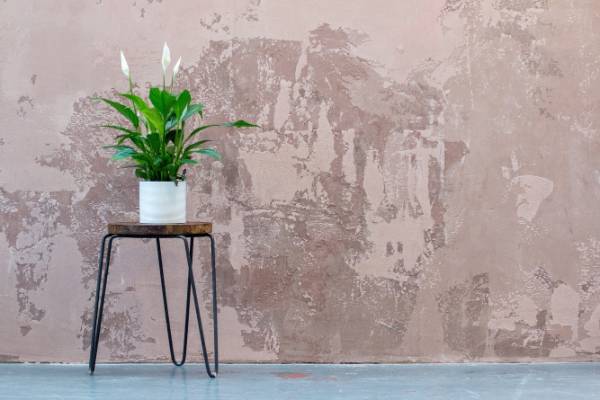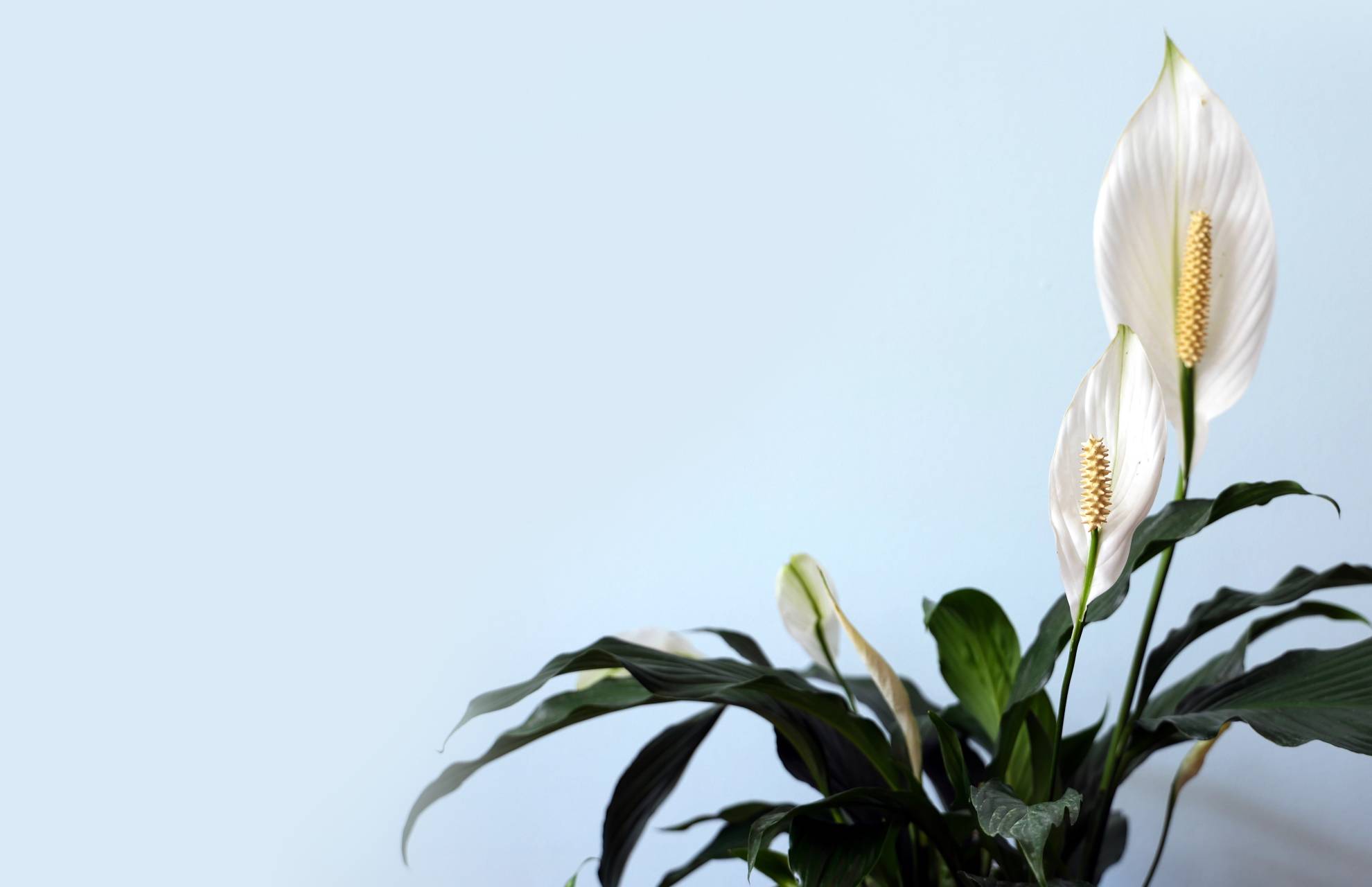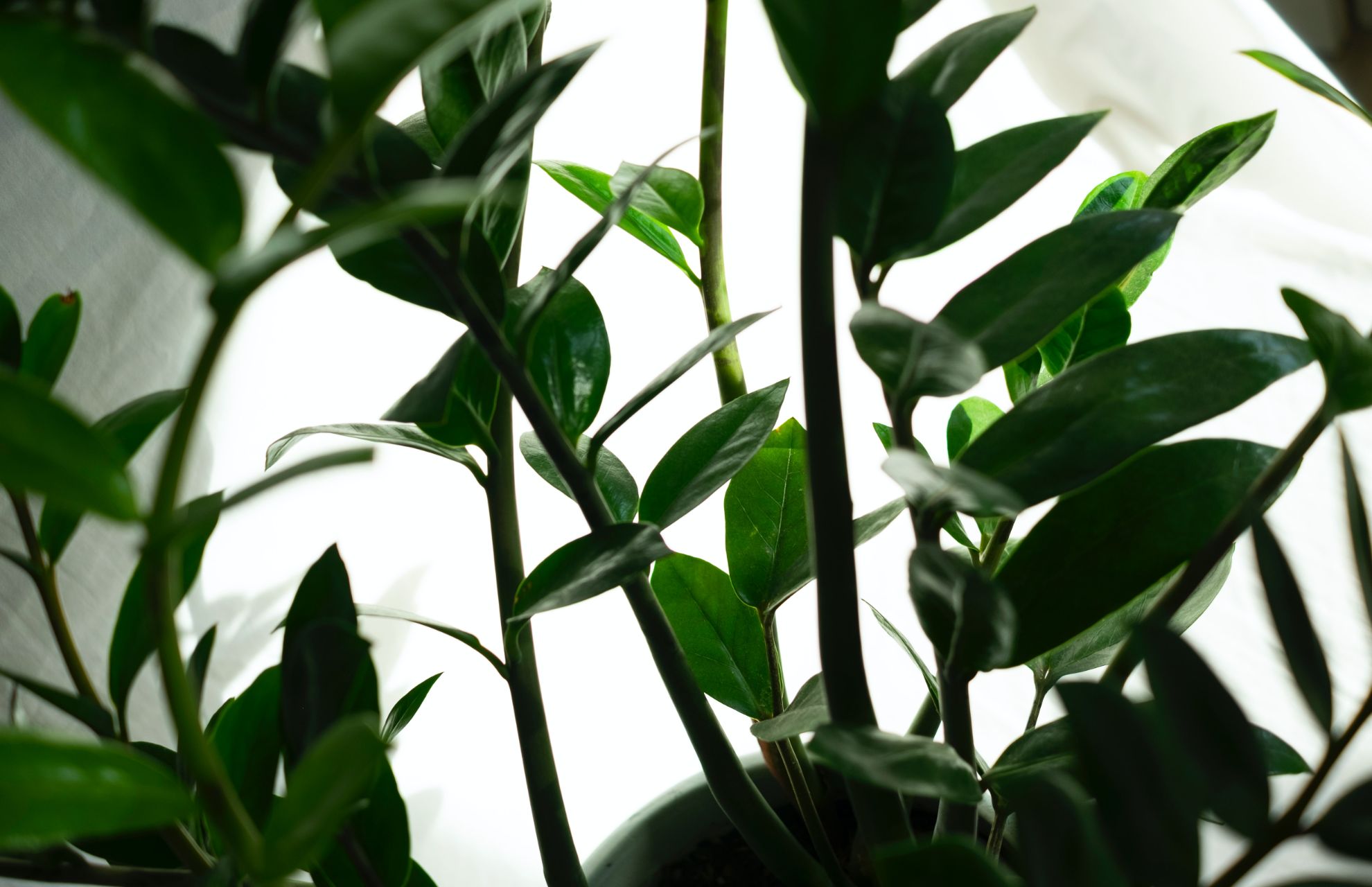Peace lilies have delicate, porcelain-colored flowers that are slender, graceful, and have green leaves. The leaf tips can turn brown for a variety of reasons, and we’ll go over the most prevalent ones in this guide. A peace lily’s leaves with brown tips typically indicate poor maintenance on the part of the owner. Please read on.
Causes Of Brown Leaf Tips On Peace Lilies
Moisture Stress
Issues with hydration are a frequent reason for brown tips on peace lilies.
- Too Much Water
Too much water prevents plants from getting the oxygen they require. If the soil is too saturated, your peace lily’s roots won’t be able to breathe because they are absorbing oxygen from the air spaces in the soil.
Although it’s simple to assume that if oversaturated soil is the issue, all you need to do is water less frequently, that may not be the best course of action.
Additionally, if the soil doesn’t drain quickly enough or if the plant is growing in an excessively large container, it may be overwatered. Instead of growing in a pot that is too big, peace lilies typically perform better when they are slightly root bound.
This is due to the challenge of giving the plant enough water without flooding the surrounding soil. The roots sit in consistently wet soil because of the extra soil in a large pot, which holds water and drains slowly.
Solution:
Use a soil moisture meter to test the soil in the bottom half of the pot as well. When the soil is on the dry side according to the meter, you can add water.
If you’re having trouble keeping the proper moisture level, think about repotting if your current container is too large, either into a smaller one or into soil that has extra perlite or rice hulls. This will retain water while assisting in improving drainage.
- Poor Drainage
Even if you are giving your plant the right amount of water, if the container has poor drainage, it’s likely that the roots are spending much longer than necessary in oversaturated soil.
Solution:
In the long run, a container with at least one drainage hole in the bottom is actually better for you. As an alternative, you could use a well-draining container concealed inside a pretty cachepot.
Even if your pot has a drainage hole or holes, make sure it isn’t blocked. Move it around by inserting your finger or a chopstick there. Remove the plant from the container if you run into resistance and check to see if the plant is root-bound. In this case, loosen the roots and repot in a slightly larger container.
Before replanting the plant in the same pot, remove any rocks and loosen any soil clumps that may be obstructing the drainage hole if you don’t need to use a larger pot.
Additionally, always empty any saucer, pot, or other catchments at the bottom of the container after watering.

- Too Little Water
Your peace lily can suffer from dehydration just as much as it can from oversaturation.
When a plant is dehydrated, it becomes stressed and can develop dry, crisp leaf tips. You can be pretty sure that there isn’t enough moisture present if you notice drooping or wilting in addition to the browning tips.
Solution:
Don’t feel bad if you occasionally underwater your plant because this issue arises from repeated underwatering or from letting the plant become dehydrated. Just be sure to check the top inch of soil on a regular basis and add water if it feels dry.
Try incorporating some rice hulls or perlite into the potting medium if you feel like the soil is drying out too quickly.
Temperature Extremes
The majority of peace lilies aren’t picky, but like all plants, they need a certain temperature range to survive and grow.
These plants do enjoy a nice, warm environment, but there is such a thing as too much good. On the other hand, if it gets too cold, they will suffer.
Solution:
The plant may become stressed and start to lose its leaves’ green color at the tips in prolonged exposure to temperatures above 80 and below 65°F.
If it’s too hot, you can either move your plant to a cooler spot away from windows that get direct sunlight or, during heatwaves, turn up the air conditioning.
During the winter, make sure to keep plants away from heat vents. In addition to being hot where the vents are, the forced air also dries the soil and vegetation more quickly.
Although you don’t have to rely solely on the heat in the winter, it’s a good reason to crank up the heat if the temperatures are too low. In the summer, avoid leaving plants close to an AC vent and think about moving them away from windows or doorways.
Lack Of Humidity
Tropical, hot, and humid regions are where peace lilies are native. The tips of the leaves are susceptible to drying out and turning brown if they don’t get the humidity that they need to thrive.
Solution:
There are many options for raising humidity, which is a good thing. Move your plant into the bathroom so it can benefit from the warmth and moisture of your daily shower, or group several indoor plants together to increase the humidity in the area.
Use a tray with pebbles and water filled in it to easily increase the humidity around your plant. Place the plant on the tray, and the humidity from evaporation will help keep the leaves glossy and green. Just keep in mind to top off the water as needed.
Then, transform humidifying time into your personal recharging time by donning some headphones, cranking up your favorite tunes, and taking pleasure in the process.
Alternatively, you can buy a humidifier to raise the room’s overall humidity. However, this is a fairly time-consuming option.
Overfertilizing
A buildup of sodium and other salts in the soil can happen when you provide a plant with too much fertilizer. It should be relatively easy to prevent this issue because peace lilies require very little fertilizer, but that doesn’t mean it can’t.
Solution:
As mentioned, watering the soil from the top rather than the bottom can help remove too much salt. Careful fertilization techniques are also beneficial.
Fertilize once a month during the spring and summer using an all-purpose indoor plant food like Miracle-Gro’s Indoor Plant Food, which is available at Amazon in two packs of 21-ounce bottles.
If you fertilize your plants in the fall and winter, dilute the fertilizer by half rather than applying it at full strength.
Sun Scorch
Your peace lily might get sunburned if it’s kept in a spot that gets direct sunlight. This frequently begins at the leaf tips, which will dry out and turn brown.
If you don’t change the sun exposure, the brown patches might spread further down the leaf.
Solution:
If you like where the plant is right now, you might want to consider covering the window with sheer curtains to block out some of the light.
Any window without a curtain or blind likely receives too much sun for the benefit of your peace lily. A window with northern exposure is typically fine.
How To Maintain A Healthy Peace Lily
Your Peace Lily will take care of you if you take care of it. The simple advice is provided below for maintaining and expanding your Peace Lily over time.
Pruning Your Peace Lily
With a clean blade, remove any ugly or outdated leaves from the plant’s base. Never take out more than 30% of the plant at once.
Trimming Peace Lilies
If only a small portion of a leaf was harmed, such as the edges, trim off any discoloration or blemishes by adhering to the leaf’s natural lines and shape.
Keeping Your Peace Lily Clean
regularly remove dust or pollen to ensure your plant can soak in as much light as possible. While supporting the underside of the leaf with your other hand, clean the leaf gently using a damp cloth.









